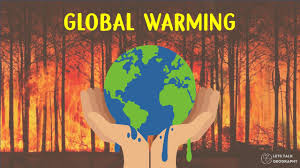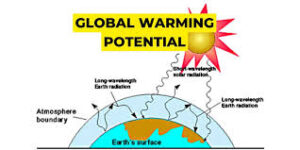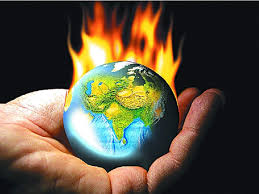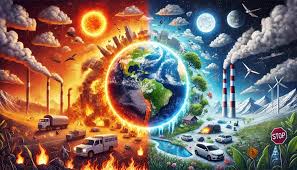Global Warming: Causes, Effects, and Solutions
Global warming is one of the most critical challenges facing humanity today. It refers to the long-term increase in Earth’s average surface temperature due to human activities, particularly the emission of greenhouse gases (GHGs). This phenomenon has profound implications for our environment, economies, and societies. In this essay, we will explore the causes of global warming, its impacts on natural systems and human life, and potential solutions to mitigate its effects.
Understanding Global Warming
Definition and Mechanism
Global warming is primarily driven by the greenhouse effect, a natural process that warms the Earth’s surface. The sun’s energy reaches the Earth, where it is absorbed and subsequently radiated back into the atmosphere as infrared energy. Greenhouse gases in the atmosphere, such as carbon dioxide (CO2), methane (CH4), and nitrous oxide (N2O), trap some of this outgoing energy, preventing it from escaping into space. This process is crucial for maintaining a temperature conducive to life on Earth.
However, human activities have significantly increased the concentration of these gases in the atmosphere, intensifying the greenhouse effect and leading to a rise in global temperatures.
Historical Context
The Earth’s climate has fluctuated throughout its history, with periods of warming and cooling. However, the current phase of warming is unprecedented in its rapidity and correlation with industrialization. Since the late 19th century, global average temperatures have risen by approximately 1.2 degrees Celsius (2.2 degrees Fahrenheit), with significant acceleration observed in recent decades.
Key Greenhouse Gases
- Carbon Dioxide (CO2): The most significant greenhouse gas emitted by human activities, primarily through fossil fuel combustion, deforestation, and land-use changes.
- Methane (CH4): A potent greenhouse gas with a much greater warming potential than CO2, released during the production and transport of coal, oil, and natural gas, as well as from livestock and other agricultural practices.
- Nitrous Oxide (N2O): Emitted from agricultural and industrial activities, as well as during the combustion of fossil fuels and solid waste.
- Fluorinated Gases: Synthetic gases that are much more potent than CO2 but are present in smaller quantities. They are often used in industrial applications.
Causes of Global Warming
- Human Activities
The primary driver of global warming is the increase in GHG emissions due to human activities. Key sources include:
- Fossil Fuel Combustion: The burning of coal, oil, and natural gas for energy production, transportation, and industrial processes releases significant amounts of CO2.
- Deforestation: Trees absorb CO2, and their removal for agriculture, logging, or urban development contributes to increased atmospheric CO2 levels.
- Agriculture: Agricultural practices contribute to GHG emissions through livestock digestion (methane), fertilizer application (nitrous oxide), and land-use changes.
- Industrial Processes: Certain industrial activities release GHGs as byproducts, contributing to overall emissions.
- Land Use Changes
Changes in land use, particularly the conversion of forests to agricultural or urban areas, significantly affect the carbon cycle. When forests are cleared, not only is CO2 stored in trees released into the atmosphere, but the land’s capacity to sequester carbon is also diminished.
- Urbanization
The rapid growth of urban areas leads to increased energy consumption, higher emissions from transportation, and greater waste generation, all of which contribute to global warming.
Effects of Global Warming
The impacts of global warming are widespread and multifaceted, affecting natural ecosystems, human health, and economies.
- Rising Temperatures
Increased global temperatures lead to several direct consequences, including:
- Heatwaves: More frequent and severe heatwaves can have devastating effects on human health, agriculture, and ecosystems.
- Changing Weather Patterns: Global warming influences weather patterns, resulting in altered precipitation patterns, increased intensity of storms, and more unpredictable weather events.
- Melting Ice and Rising Sea Levels
- Polar Ice Melting: The Arctic and Antarctic regions are experiencing rapid ice melt, contributing to rising sea levels. As polar ice caps shrink, they affect global climate patterns and ecosystems.
- Sea Level Rise: Higher sea levels threaten coastal communities and ecosystems, leading to increased flooding, erosion, and saltwater intrusion into freshwater resources.
- Ocean Acidification
The absorption of CO2 by oceans leads to acidification, affecting marine ecosystems, particularly coral reefs and shellfish. Acidic waters impair the ability of marine organisms to build shells and skeletons, threatening biodiversity and fisheries.
- Impacts on Ecosystems and Biodiversity
Global warming disrupts ecosystems and can lead to species extinction. Key effects include:
- Habitat Loss: Many species may be unable to adapt quickly enough to changing climates, resulting in loss of habitat and biodiversity.
- Species Migration: As temperatures rise, many species are shifting their ranges toward cooler areas. This can lead to competition for resources and alter existing ecosystems.
- Disruption of Ecosystem Services: Ecosystems provide critical services, including pollination, water purification, and climate regulation. Disruptions to these services can have significant impacts on human livelihoods and food security.
- Human Health Risks

Global warming poses significant risks to human health, including:
- Heat-Related Illnesses: Increased temperatures can lead to heat exhaustion, heatstroke, and exacerbation of pre-existing health conditions.
- Spread of Diseases: Changes in climate can alter the distribution of disease vectors, such as mosquitoes, leading to the spread of diseases like malaria and dengue fever.
- Food and Water Security: Disrupted agricultural systems and changing weather patterns can threaten food security, while droughts and flooding can compromise freshwater supplies.
- Economic Consequences
The economic impacts of global warming are vast and varied:
- Damage to Infrastructure: Extreme weather events, such as hurricanes and floods, can damage critical infrastructure, leading to significant economic losses.
- Agricultural Losses: Changes in temperature and precipitation patterns can reduce crop yields, leading to food shortages and increased prices.
- Increased Energy Costs: As temperatures rise, demand for cooling increases, leading to higher energy costs and strain on power grids.
Solutions to Global Warming
Addressing global warming requires concerted efforts across multiple sectors, including energy, transportation, agriculture, and land use. Solutions can be categorized into mitigation and adaptation strategies.
- Mitigation Strategies
Mitigation focuses on reducing GHG emissions and enhancing carbon sinks. Key strategies include:
- Transitioning to Renewable Energy: Shifting from fossil fuels to renewable energy sources, such as solar, wind, and hydroelectric power, can significantly reduce emissions from energy production.
- Energy Efficiency: Implementing energy-efficient technologies and practices in buildings, transportation, and industries can lower energy consumption and associated emissions.
- Reforestation and Afforestation: Planting trees and restoring degraded forests enhance carbon sequestration, helping to offset emissions.
- Sustainable Agriculture: Adopting practices that reduce emissions from agriculture, such as precision farming, agroforestry, and improved livestock management, can contribute to mitigation efforts.
- Adaptation Strategies

Adaptation involves adjusting to the impacts of climate change to reduce vulnerability and enhance resilience. Key strategies include:
- Infrastructure Resilience: Designing infrastructure to withstand extreme weather events and rising sea levels can minimize damage and economic loss.
- Water Management: Implementing sustainable water management practices, such as rainwater harvesting and improved irrigation techniques, can enhance water security in the face of changing precipitation patterns.
- Disaster Preparedness: Developing early warning systems and disaster response plans can help communities better prepare for and respond to climate-related events.
- Policy and International Cooperation
Effective policy frameworks and international cooperation are essential for addressing global warming:
- Climate Agreements: International agreements, such as the Paris Agreement, aim to unite countries in their efforts to limit global warming and reduce emissions.
- Carbon Pricing: Implementing carbon pricing mechanisms, such as carbon taxes or cap-and-trade systems, can incentivize emission reductions and drive investment in clean technologies.
- Public Awareness and Education: Raising awareness about the impacts of global warming and promoting sustainable practices can foster public support for climate action.
- Innovation and Technology
Investing in research and development of new technologies is crucial for combating global warming:
- Carbon Capture and Storage (CCS): Developing technologies to capture and store CO2 emissions from industrial processes and power plants can help reduce atmospheric concentrations.
- Climate-Smart Technologies: Innovations in agriculture, such as drought-resistant crops and precision farming technologies, can enhance food security while reducing emissions.
Conclusion
Global warming represents one of the most significant challenges of our time, with far-reaching implications for ecosystems, human health, and global economies. Understanding the causes and effects of this phenomenon is crucial for developing effective solutions.
By embracing a combination of mitigation and adaptation strategies, promoting sustainable practices, and fostering international cooperation, we can address the challenges posed by global warming and work toward a more resilient and sustainable future. The time to act is now, as the choices we make today will determine the health of our planet and the well-being of future generations.

